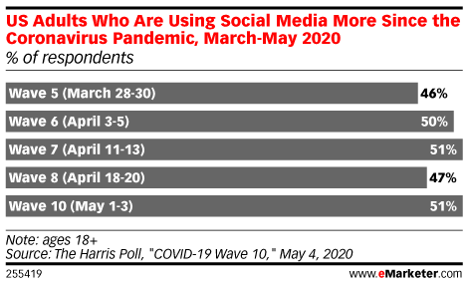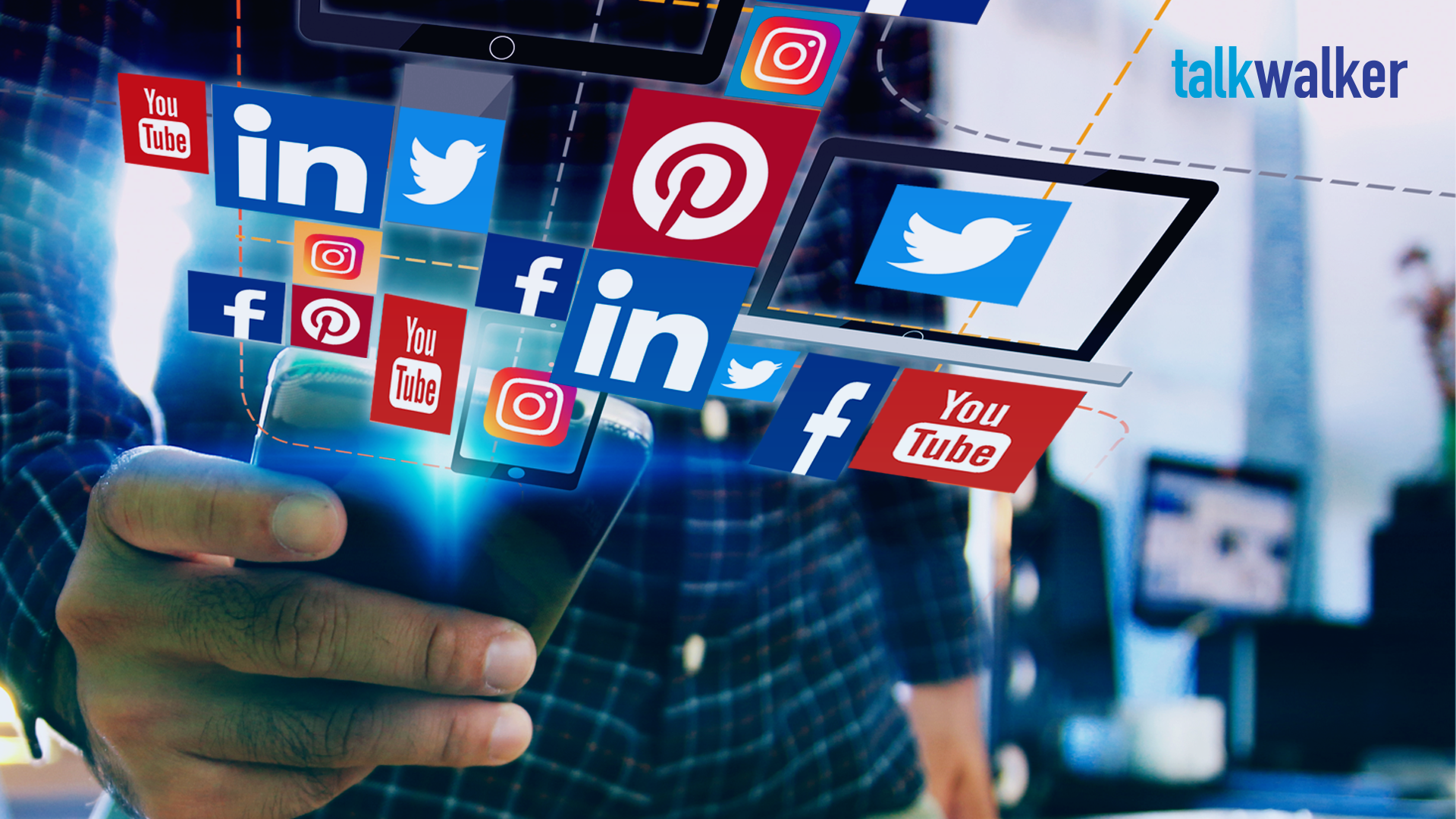Social media, on an individual basis, is used for keeping in touch with friends and family. This, however, can be expanded to encompass using social media as a networking tool for career options, finding people across the globe with similar interests, and simply as a means to vent their frustrations/emotions. While these applications are still used for similar purposes today, they are most definitely used more frequently as a result of the forced isolation that came about from the pandemic. People who didn’t enjoy using social media and avoided it at all costs as a method of communication have reluctantly given into trying these platforms to stay in touch with their loved ones. Whether it is via the direct messaging features available on various apps or through posting pictures from their daily lives, people try to depict their lives in the best way possible on these virtual platforms. The way social media has been used prior to and during the pandemic has a strong relationship to the idea of the social self.
Especially with the pandemic, social media has brought light to another layer of healthcare. Various healthcare providers created public accounts on these social media platforms, such as YouTube, Facebook, Instagram, Twitter, Tiktok, and etc. to provide information/updates about what is going on with the pandemic, social distancing guidelines, and updates about the vaccine. In a peer reviewed article published prior to COVID, the authors explored the various benefits and risks of being an active user on social media. Some of these benefits include increasing interactions with others, having more accessible information, social support, and having the potential to influence many policies related to health (Moorhead et al., 2013). Many of these healthcare providers whose following blew up during the pandemic have even branched out into making social media a side gig, taking monetary compensation for everything that they post, even collaborating with major companies to encourage people to stay safe and healthy during the pandemic. A good example is the user @lifeofadoctor on Tiktok, whose following grew exponentially after making daily/weekly updates on COVID statistics during the pandemic to encourage his followers to stay home. His following grew so much in that brief period of time that he was among one of the first few creators on TikTok to be a recipient of $1 billion creator fund.
https://vm.tiktok.com/ZMJgx4KYe/
However, the increased use of social media during the pandemic wasn’t completely without faults. It impacted the areas of an individual’s social self and the dynamic between various groups. A social psychology concept that can be applied to the use of social media is the self-discrepancy theory. This theory states that individuals compare their “actual” selves to their “ideal” self and if there are any inconsistencies between the two, it causes immense discomfort in the individual. This can specifically apply to how social media is used as it further encourages people to compare their “actual” selves to their “ideal” selves depicted on platforms. While trying to depict their life in the best way possible, people may start to see themselves in two different ways (their “actual” self in real life versus their “ideal” self-depicted in social media) and because of this, a lot of discomfort may arise within individuals as they may feel a strong urge to be their “ideal” self, but it may not be realistic to the type of lifestyle they currently live. A study conducted in 2006 explored the relationship between self-discrepancy in terms of body image and how this affects participation in social comparison. It found that women who had high levels of self-discrepancy were more likely to compare themselves to others from being exposed to the thin-ideal, and they found that these comparisons can result in self-inflicted negative consequences (Bessenoff, 2006). This effect may be amplified in teenagers who see the “idealized” view of many of their favorite celebrities/peers and start to believe that everyone is portraying their “actual” selves instead of their “idealized” selves, which can be very damaging to their self-esteem. All influencers, at one point or another, can be accused of doing so. It would be hard to find a celebrity that posts the negative events going on in their lives and not showing a glamorized view of what they do on a daily basis.
This can also tie into how social media is used to boost an individual’s self-esteem as many use social media to depict the highlights of their life, completely neglecting to post the negatives. With this close to ideal depiction of one’s self on social media, it can cause many to comment on how great you look and how great your life is, which can directly affect (and boost) someone’s self-esteem. People depict themselves on social media the way they think they are seen by others or the way they want to be seen, which can be very problematic for the younger generation that are frequenting these platforms, giving them unrealistic expectations of what they should look like and how life is. A good example of this is the supermodel Gigi Hadid – she is rarely found depicting the hardships of motherhood, it was only until recently that she even posted pictures of herself being pregnant. Similarly, another influencer on social media who has a particular presence on there is James Charles. He is mainly seen on Instagram wearing glamorous makeup looks and living a lavish lifestyle, but when the paparazzi catches him, he can be seen without makeup and shows that there is much more to him apart from his makeup looks.
Despite the negative effects that social media may have on self-esteem, it can also be used to enhance one’s own self-image. In a study conducted by Gonzalez and Hancock in 2011, they found that, interestingly enough, increasing the exposure to information on your own Facebook profile can enhance self-esteem, especially when an individual selectively-self presents themselves on the internet (Gonzalez and Hancock, 2011).
Another concept of social psychology that can be applied to the use of social media, especially amongst teenagers, is the Common Ingroup Identity Model that was developed by Gaertner and Dovidio. The model suggests that if members of various groups can recategorize themselves as members of a more superior group, the intergroup relations can drastically improve. This can specifically apply to social media in the sense that people all over the world have various attitudes towards other members of other racial and socioeconomic groups and social media can expose people to others who they would not normally interact with, allowing them to find some common/shared identities with members of the outgroup, which would further initiate the formation of other new, more superior groups that are based primarily on shared interests/beliefs. For example, my brother, being stuck at home, ventured out to different social media platforms where he was exposed to people that he typically did not interact with on a daily basis prior to the pandemic, and actually ended up developing a different perspective on racial minorities as he found many individuals who fit into that group that he shared a common identity with.
Interestingly enough, although many thinks that the increase in the use of social media may be temporary and that once the pandemic is over, the new users would stop using these platforms, eMarketer actually predicts the opposite. Using data collected from the Harris Poll, they found that approximately half of the respondents reported using social media more frequently than they ever had before (seen in image below) and made inferences about how these platforms would be used in the future in a world post-pandemic. Those who, during the pandemic, learned how to use all types of video platform services are more likely to continue doing so even when lockdown restrictions are lifted. Additionally, eMarketer predicts that the amount of time we will spend on messaging platforms will also increase by approximately four minutes. Lastly, they note that US adults will probably spend about seven more minutes a day on social media, but they expect this to decline in 2021 once the pandemic is controlled (Samet, 2020).

Overall, while social media may initially seem like a great way to keep in touch with loved ones while maintaining the social distancing rules across the globe, it can also bring about many negative effects and challenges. People may feel more comfortable behind a phone/computer screen and take advantage of this comfort by cyberbullying their peers and influencers. According to a peer-reviewed study done this year exploring the role of social media during COVID, they found that this comfort may also result in individuals exploiting public opinions and committing other hate crimes that they would not have the courage to do otherwise in person. For example, there are many individuals who comment hateful things on many celebrities’/influencers’ social media accounts, but if they saw the celebrity in person, they would pretend to be a fan. Furthermore, many rely on the Internet for the latest news and updates in the world and social media has started to evolve into sharing information about important current events, but many users on social media can “troll” on the platform by disseminating misinformation. The spread of misinformation can easily result in mass hysteria about current events (Sahni & Sharma, 2020). Lastly, while social media may boost one person’s self-esteem, it may destroy an impressionable individual’s own self-esteem with the hopes of achieving an unattainable reality depicted.
Bibliography
- Bessenoff, G. R. (2006). Can the Media Affect Us? Social Comparison, Self-Discrepancy, and the Thin Ideal. Psychology of Women Quarterly, 30(3), 239–251. https://doi.org/10.1111/j.1471-6402.2006.00292.x
- Gonzales, A. L., & Hancock, J. T. (2011). Mirror, mirror on my Facebook wall: Effects of exposure to Facebook on self-esteem. Cyberpsychology, behavior, and social networking, 14(1-2), 79-83.
- Moorhead SA, Hazlett DE, Harrison L, Carroll JK, Irwin A, Hoving C. A New Dimension of Health Care: Systematic Review of the Uses, Benefits, and Limitations of Social Media for Health Communication. J Med Internet Res 2013;15(4):e85. URL: https://www.jmir.org/2013/4/e85. DOI: 10.2196/jmir.1933. PMID: 23615206. PMCID: PMC3636326
- Sahni, H., & Sharma, H. (2020, June 29). Role of social media during the COVID-19 pandemic: Beneficial, destructive, or reconstructive? International Journal of Academic Medicine, 6(2), 70-75. https://www.ijam-web.org/article.asp?issn=2455-5568;year=2020;volume=6;issue=2;spage=70;epage=75;aulast=SahniSamet, A. (2020, July 29). How the Coronavirus Is Changing US Social Media Usage. eMarketer. https://www.emarketer.com/content/how-coronavirus-changing-us-social-media-usage
- Samet, A. (2020, July 29). How the Coronavirus Is Changing US Social Media Usage. eMarketer. https://www.emarketer.com/content/how-coronavirus-changing-us-social-media-usage



